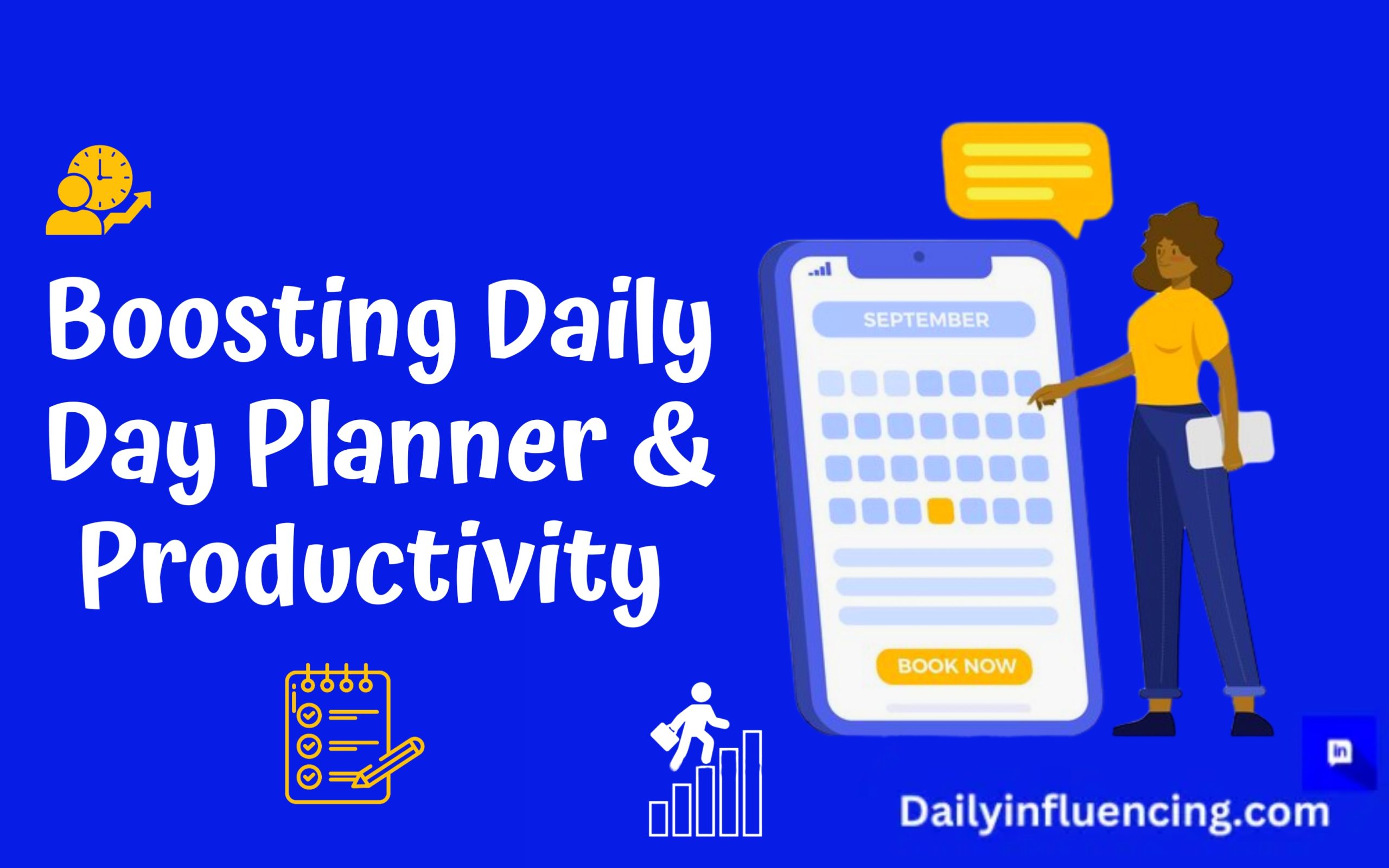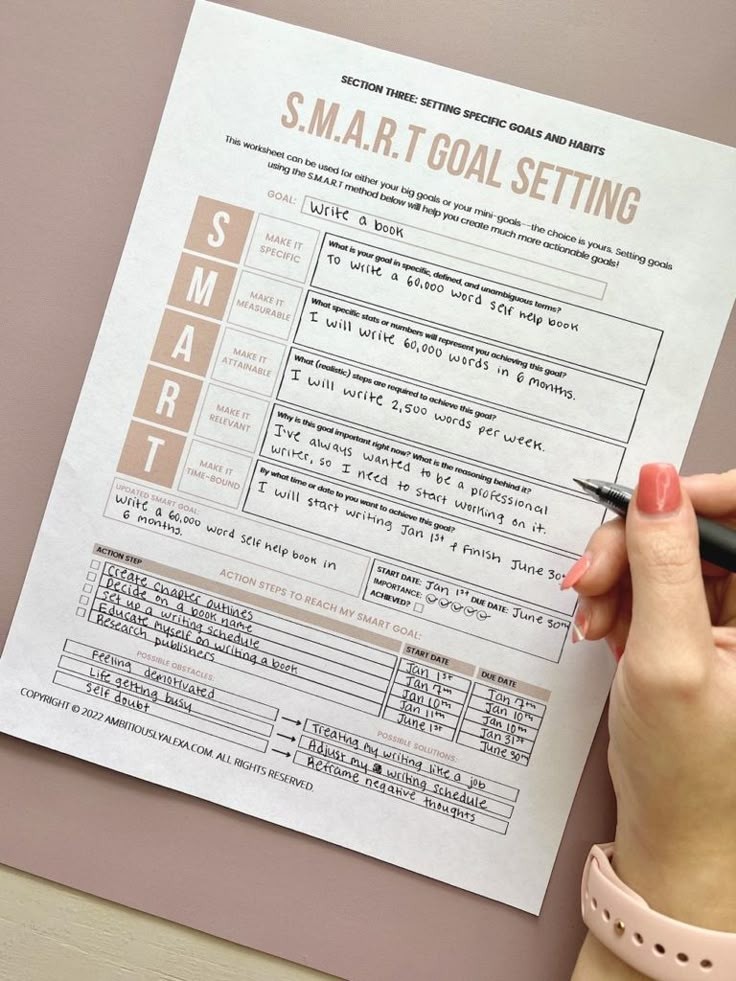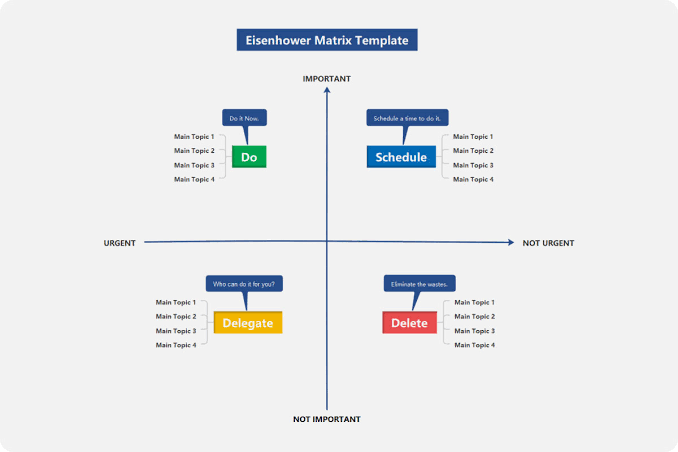
Boost productivity as a business owner with 10 easy daily day planner hacks. Maximize efficiency, achieve goals and reduce stress.
Staying organized and focused is crucial for achieving success. With numerous tasks competing for our attention. It’s easy to get overwhelmed and lose sight of our goals. Consequently, having a daily day planner can be a game-changer. By incorporating a planner into your daily routine, you’ll be able to prioritize tasks, manage your time more efficiently, and ultimately, boost your productivity.
In this post, we’ll delve into the world of daily day planners and explore 10 easy-to-implement hacks to help you get the most out of your planner. From setting clear goals to eliminating distractions, we’ll cover it all. So, let’s get started
Why a Daily Day Planner is Essential for Business Owners
As we discussed earlier, staying organized and focused is crucial for achieving success. Moreover, business owners face unique challenges that can make it even harder to stay on top of tasks and responsibilities. Notably, a daily day planner can be an indispensable tool for business owners looking to boost productivity and achieve their goals.
Few reasons why:
- Prioritize tasks and manage time more efficiently: By scheduling tasks and appointments. Business owners can ensure that they’re making the most of their time and focusing on high-priority tasks.
- Avoid procrastination and stay motivated: A planner can help business owners break down large tasks into smaller. And manageable chunks, making it easier to stay focused and motivated.
- Reduce stress and anxiety: By having a clear plan and schedule, business owners can feel more in control. And prepared for the day ahead, leading to improved mental health and well-being.

10 Daily Day Planner Hacks to Boost Productivity
To maximize the benefits of a daily day planner, it’s essential to incorporate strategies that enhance its effectiveness. By leveraging these techniques, you can optimize your planner to boost productivity, streamline tasks, and achieve your goals. Consequently, let’s explore the following 10 daily day planner hacks designed to supercharge your productivity:
- Daily Day Planner Essentials: Set Clear Goals and Objectives
- Prioritize Tasks Using the Eisenhower Matrix
- Optimizing Your Daily Day Planner: Use a “Stop Doing” List
- Schedule Breaks and Self-Care
- Maximizing Productivity with a Daily Day Planner: Time-Blocking
- Eliminate Distractions with a “Focus Mode”
- Review and Adjust Your Plan Regularly
- Customizing Your Daily Day Planner: Create a “Someday” List
- Make Time for Reflection and Review
- Review and Celebrate Your Progress
1. Daily Day Planner Essentials: Set Clear Goals and Objectives
To set yourself up for success, it’s crucial to establish clear goals and objectives. By doing so, you’ll create a roadmap for your daily activities, ensuring that every task aligns with your overall vision. Furthermore, clear goals enable you to prioritize tasks effectively, focus on high-impact activities, and make significant progress toward achieving your objectives.
So, how do you set clear goals and objectives? Firstly, start by identifying what you want to achieve. Ask yourself questions like “What are my short-term and long-term goals?” or “What objectives do I need to accomplish within the next quarter?”
Next, make sure your goals are specific, measurable, achievable, relevant, and time-bound (SMART). For instance, instead of setting a vague goal like “I want to increase sales,” set a specific goal like “I want to increase sales by 15% within the next 6 months.”
Additionally, break down large goals into smaller, manageable tasks. This will enable you to create a realistic plan of action, making it easier to stay focused and motivated.

2. Prioritize Tasks Using the Eisenhower Matrix
Once you’ve set clear goals and objectives, it’s essential to prioritize tasks effectively. One powerful tool for doing so is the Eisenhower Matrix. Named after former US President Dwight D. Eisenhower, this decision-making matrix helps you prioritize tasks based on their urgency and importance.
To use the Eisenhower Matrix, start by dividing a sheet of paper or a page in your planner into four quadrants. Label each quadrant as follows:
- Urgent and Important (Do First)
- Not Urgent but Important (Schedule)
- Urgent but Not Important (Delegate)
- Not Urgent and Not Important (Eliminate)
Next, write down each task you need to complete, and then plot it on the matrix according to its urgency and importance. This will enable you to visualize your tasks and prioritize them accordingly.
For instance, if you have a deadline to meet, that task would fall under the “Urgent and Important” quadrant. On the other hand, a task like checking social media would likely fall under the “Not Urgent and Not Important” quadrant.
By using the Eisenhower Matrix, you’ll be able to prioritize tasks effectively, focus on high-impact activities, and make significant progress toward achieving your goals.

3. Optimizing Your Daily Day Planner: Use a “Stop Doing” List
When it comes to boosting productivity, it’s not just about what you start doing, but also about what you stop doing. Many of us waste time on tasks that are no longer necessary, inefficient, or simply not aligned with our goals. To optimize your daily day planner, consider incorporating a “Stop Doing” list.
A “Stop Doing” list is a simple yet powerful tool that helps you identify tasks, habits, or activities that are no longer serving you. By acknowledging and letting go of these time-wasters, you’ll be able to free up mental energy, reduce stress, and focus on high-priority tasks.
To create a “Stop Doing” list, start by reflecting on your daily habits and tasks. Ask yourself questions like:
- What tasks am I doing out of habit or obligation, rather than necessity?
- What activities are taking up too much of my time or energy?
- What tasks can I delegate or automate?
Write down your answers and then review them regularly. Be honest with yourself, and don’t be afraid to let go of tasks that are no longer serving you.
4. Schedule Breaks and Self-Care
When it comes to productivity, it’s easy to get caught up in the idea that we need to work non-stop to achieve our goals. However, neglecting breaks and self-care can actually have the opposite effect. By scheduling breaks and self-care into your daily day planner, you’ll be able to recharge, refocus, and maintain your productivity throughout the day.
Research has shown that taking regular breaks can improve cognitive function, boost creativity, and reduce stress. Additionally, prioritizing self-care can have a positive impact on both physical and mental health.
To schedule breaks and self-care, start by identifying your most productive work periods. Typically, these are the morning and early afternoon. Then, schedule breaks around these periods to give yourself time to rest and recharge.
Some ideas for breaks and self-care include:
- Taking a short walk outside
- Practicing deep breathing exercises or meditation
- Reading a book or listening to music
- Doing a quick workout or stretch
- Enjoying a healthy snack or meal
Remember to prioritize self-care activities that bring you joy and relaxation. By incorporating breaks and self-care into your daily day planner, you’ll be able to maintain your productivity, reduce burnout, and achieve your goals with greater ease.

5. Maximizing Productivity with a Daily Day Planner: Time-Blocking
Time-blocking is a powerful technique for maximizing productivity with a daily day planner. By scheduling large blocks of uninterrupted time, you’ll be able to focus on high-priority tasks, minimize distractions, and make significant progress toward achieving your goals.
To implement time-blocking, start by identifying your most important tasks and scheduling them in fixed, uninterrupted blocks of time. Typically, these blocks should be 90-120 minutes long, with breaks in between to rest and recharge.
Some tips for effective time-blocking include:
- Schedule time-blocks for high-priority tasks first
- Eliminate distractions during time-blocks, such as turning off notifications or finding a quiet workspace
- Take breaks between time-blocks to rest and recharge
- Be flexible and adjust time-blocks as needed
6. Eliminate Distractions with a “Focus Mode”
In today’s era of constant connectivity, distractions are everywhere. Social media, email, text messages, and notifications can all derail our focus and productivity. To overcome these distractions, consider implementing a “Focus Mode” in your daily day planner.
Focus Mode is a simple yet powerful technique that involves eliminating distractions for a set period. By doing so, you’ll be able to concentrate on high-priority tasks, make significant progress, and achieve your goals.
To implement Focus Mode, follow these steps:
- Identify the most distracting activities, such as social media or email
- Schedule Focus Mode sessions in your planner, typically 60-90 minutes long
- Eliminate distractions during Focus Mode, such as turning off notifications or finding a quiet workspace
- Take breaks between Focus Mode sessions to rest and recharge
7. Review and Adjust Your Plan Regularly
Creating a daily day planner is just the first step. To ensure you’re on track to achieving your goals, it’s essential to review and adjust your plan regularly. This involves reflecting on your progress, identifying areas for improvement, and making adjustments to your schedule as needed.
To review and adjust your plan, follow these steps:
- Schedule regular review sessions in your planner, such as weekly or bi-weekly
- Reflect on your progress, celebrating successes and identifying areas for improvement
- Identify any obstacles or challenges tat are hindering your progress
- Adjust your schedule as needed, making changes to your daily or weekly routine
By regularly reviewing and adjusting your plan, you’ll be able to:
- Stay on track and focused on your goals
- Identify and overcome obstacles and challenges
- Make continuous progress and improvement
- Achieve your goals and celebrate your successes
8. Customizing Your Daily Day Planner: Create a “Someday” List
As you plan out your day, week, and month, it’s easy to get caught up in the tasks and activities that need to be done immediately. However, it’s also important to make space for those big, long-term goals and ideas that may not be urgent but are still important.
This is where a “Someday” list comes in. A “Someday” list is a designated space in your planner where you can capture those big, long-term goals and ideas that you want to accomplish someday.
To create a “Someday” list, follow these steps:
- Designate a page or section in your planner for your “Someday” list
- Write down all of the big, long-term goals and ideas that come to mind
- Review and update your “Someday” list regularly, adding new ideas and crossing off ones that have been accomplished
9. Use a “Done” List to Celebrate Your Accomplishments
When it comes to productivity, it’s easy to get caught up in the tasks and activities that still need to be done. However, it’s also important to take the time to celebrate your accomplishments and reflect on what you’ve already achieved.
This is where a “Done” list comes in. A “Done” list is a designated space in your planner where you can write down all of the tasks and activities you’ve completed.
To use a “Done” list, follow these steps:
- Designate a page or section in your planner for your “Done” list
- Write down each task or activity you complete
- Review your “Done” list regularly to reflect on your progress and accomplishments
10. Review and Reflect on Your Progress
Regularly reviewing and reflecting on your progress is an essential part of maintaining a productive daily routine. By taking the time to reflect on what’s working and what’s not, you can make adjustments to your routine and stay on track to achieving your goals.
To review and reflect on your progress, follow these steps:
- Schedule regular review sessions in your planner, such as weekly or monthly
- Reflect on your progress, celebrating successes and identifying areas for improvement
- Make adjustments to your routine as needed, based on what you’ve learned
Putting it All Together: Creating a Daily Day Planner Routine
Now that you’ve learned the 10 daily day planner hacks to boost productivity, it’s time to put them all together and create a daily day planner routine that works for you.
To create a daily day planner routine, follow these steps:
- Start by setting clear goals and objectives, as outlined in Hack #1
- Prioritize your tasks using the Eisenhower Matrix, as outlined in Hack #2
- Use a “Stop Doing” list to eliminate non-essential tasks, as outlined in Hack #3
- Schedule breaks and self-care, as outlined in Hack #4
- Implement time-blocking to maximize productivity, as outlined in Hack #5
Continue with the rest of the hacks, incorporating them into your daily routine in a way that feels natural and sustainable for you.
Remember, the key is to create a routine that works for you, not against you. Experiment with different hacks and techniques until you find a rhythm that boosts your productivity and helps you achieve your goals.
CONCLUSION
Congratulations on learning the 10 daily day planner hacks to boost productivity! By implementing these hacks, you’ll be able to create a daily day planner routine that helps you achieve your goals and increase your productivity.
Meanwhile, as you start incorporating these hacks into your daily routine, you’ll notice a significant improvement in your time management skills. Furthermore, you’ll be able to prioritize tasks more effectively, eliminate distractions, and make steady progress towards your objectives. Ultimately, you’ll be well on your way to achieving success and creating a more balanced and fulfilling life.




